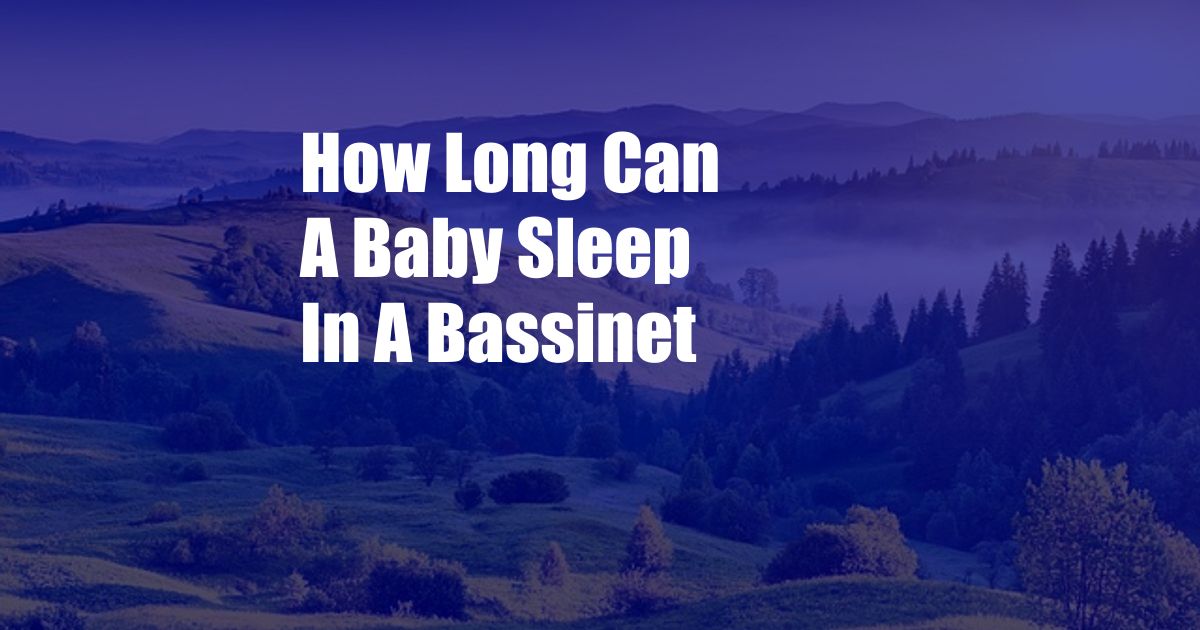
How Long Can a Baby Sleep in a Bassinet?
As a new parent, you’ll likely spend countless hours gazing at your precious baby, marveling at their tiny features and wondering how to provide the best care. One of the most important aspects of a baby’s well-being is ensuring they get enough sleep, and choosing the right sleeping arrangement is crucial. Bassinets are a popular choice for newborns, but it’s important to know how long your baby can safely sleep in one before transitioning to a crib or toddler bed.
In this comprehensive guide, we’ll delve into the topic of bassinet usage, discussing its benefits, limitations, and the factors that determine how long a baby can sleep in a bassinet. By the end, you’ll have a clear understanding of when to make the switch to a different sleeping arrangement, ensuring your little one’s safety and comfort throughout their developmental journey.
Bassinet Usage: Benefits and Limitations
Bassinets offer several advantages for newborns. They are typically placed next to the parent’s bed, making it easy for nighttime feedings and diaper changes. Bassinets also provide a cozy and secure sleeping environment for babies, as they are smaller and more enclosed than cribs. This can help to reduce the risk of rolling over or falling out of bed.
However, bassinets also have some limitations. They are designed for short-term use, and as babies grow, they may start to outgrow the bassinet. Additionally, bassinets may not be suitable for all babies. For instance, babies with certain medical conditions or developmental delays may require a specialized sleeping arrangement.
Factors Affecting Bassinet Usage Duration
The length of time a baby can safely sleep in a bassinet depends on several factors, including:
- Baby’s size and weight: As babies grow, they will start to outgrow their bassinet. Generally, a baby should be moved to a crib when they reach around 30 inches in length or 15 pounds in weight.
- Baby’s development: Some babies may start rolling over or pulling themselves up sooner than others. Once a baby becomes mobile, they may be at risk of rolling out of the bassinet, so it’s time to switch to a crib.
- Bassinet type: Different types of bassinets have different weight limits and size restrictions. Choose a bassinet that is appropriate for your baby’s age, size, and developmental stage.
- Sleep habits: If a baby is consistently waking up or fussing in their bassinet, it may be a sign that they are no longer comfortable sleeping in it and need a bigger bed.
When to Transition to a Crib
As a general rule of thumb, most babies should be transitioned to a crib between 4 and 6 months old. However, it’s important to watch for signs that your baby may be ready for the switch sooner or later. Signs include:
- Your baby has outgrown the bassinet in terms of size or weight.
- Your baby has started rolling over or pulling themselves up.
- Your baby is frequently waking up or fussing in the bassinet.
Tips and Expert Advice
Here are some tips and expert advice to help you determine how long your baby should sleep in a bassinet:
- Follow the manufacturer’s guidelines: The manufacturer of your bassinet will provide specific recommendations for how long it can be used safely. Always follow these guidelines closely.
- Pay attention to your baby’s cues: Your baby will give you cues when they are ready to transition to a crib. Watch for signs such as rolling over, pulling themselves up, or fussing in the bassinet.
- Err on the side of caution: If you are unsure whether it is time to transition your baby to a crib, it is always better to err on the side of caution and make the switch sooner rather than later.
Frequently Asked Questions (FAQs)
Here are some frequently asked questions about how long a baby can sleep in a bassinet:
- Q: What is the average age at which babies transition to a crib?
- A: Most babies transition to a crib between 4 and 6 months old.
- Q: What are the signs that a baby is ready for a crib?
- A: Signs include outgrowing the bassinet, rolling over or pulling themselves up, and frequent waking or fussing in the bassinet.
- Q: Can I keep my baby in a bassinet for longer than 6 months?
- A: It is generally not recommended to keep a baby in a bassinet for longer than 6 months, as they may outgrow it and be at risk of rolling out.
Conclusion
Understanding how long a baby can sleep in a bassinet is crucial for ensuring their safety and comfort. By considering factors such as their size, development, and sleep habits, you can determine the right time to transition them to a crib. Remember to follow the manufacturer’s guidelines, pay attention to your baby’s cues, and err on the side of caution when making the switch.
If you have any further questions or concerns about your baby’s sleeping arrangements, do not hesitate to consult your healthcare provider for personalized advice. By providing a safe and comfortable sleeping environment, you can help your baby thrive and reach their full potential.
Are you interested in learning more about infant sleep? Check out our additional resources for helpful tips and information.